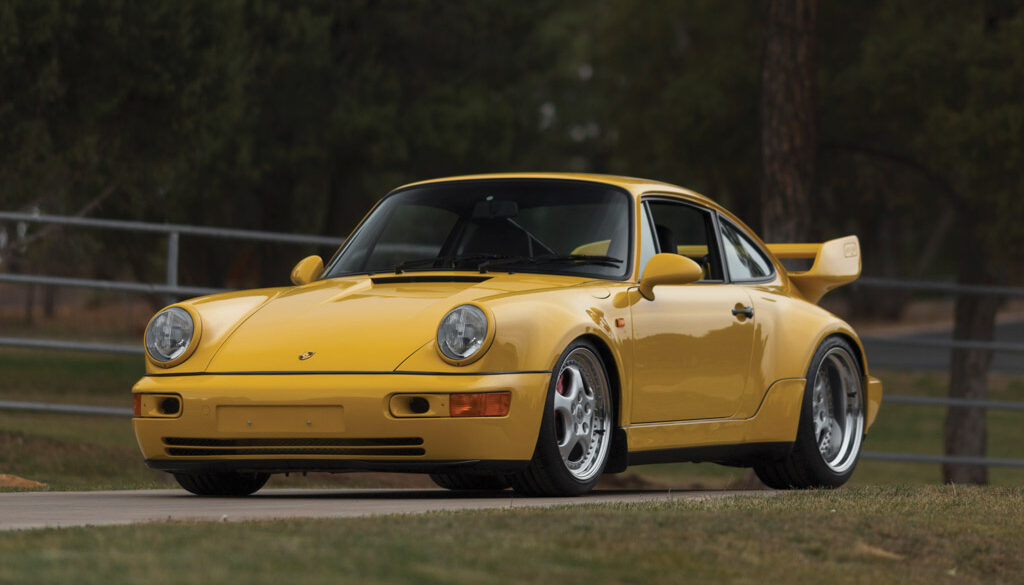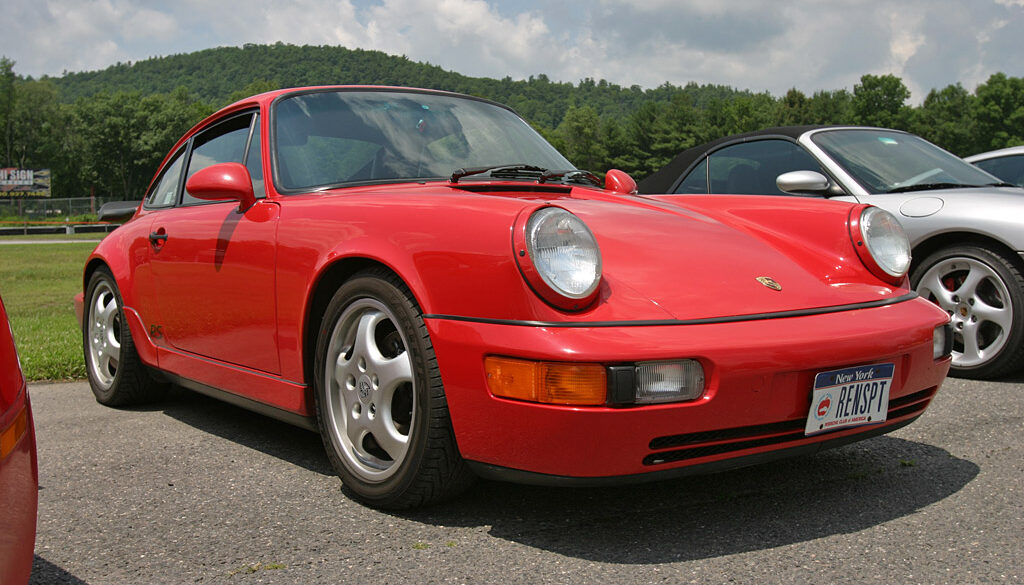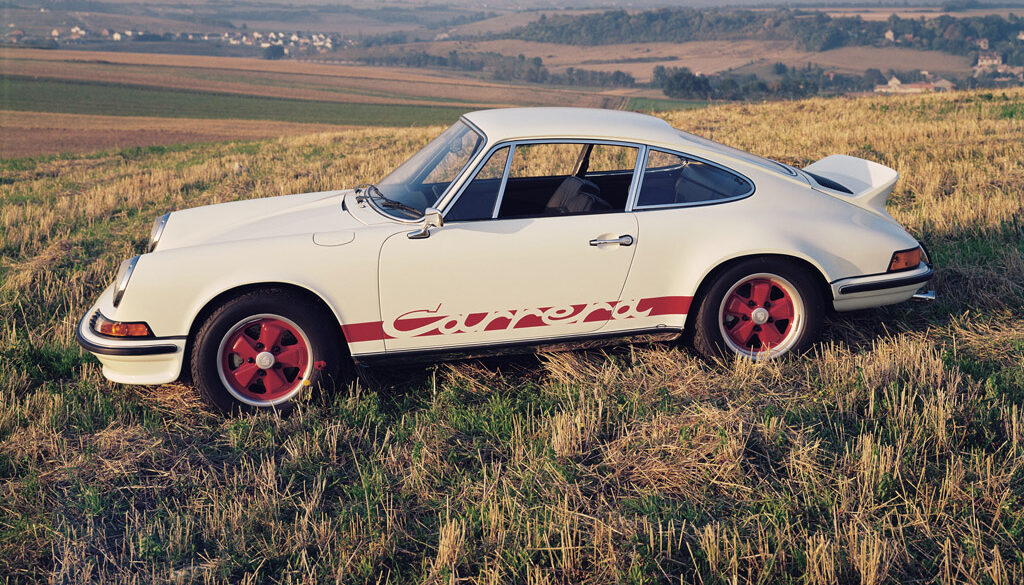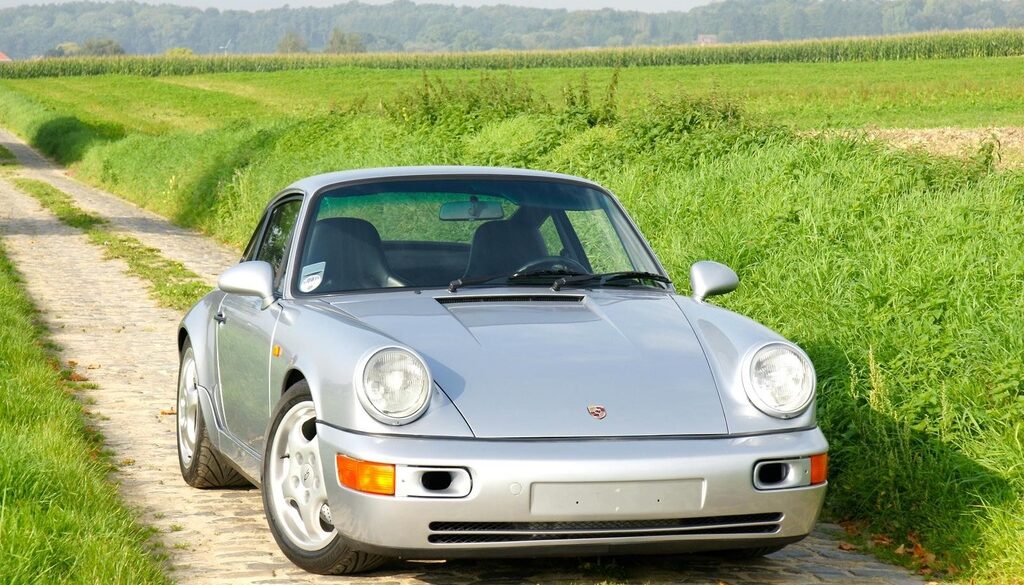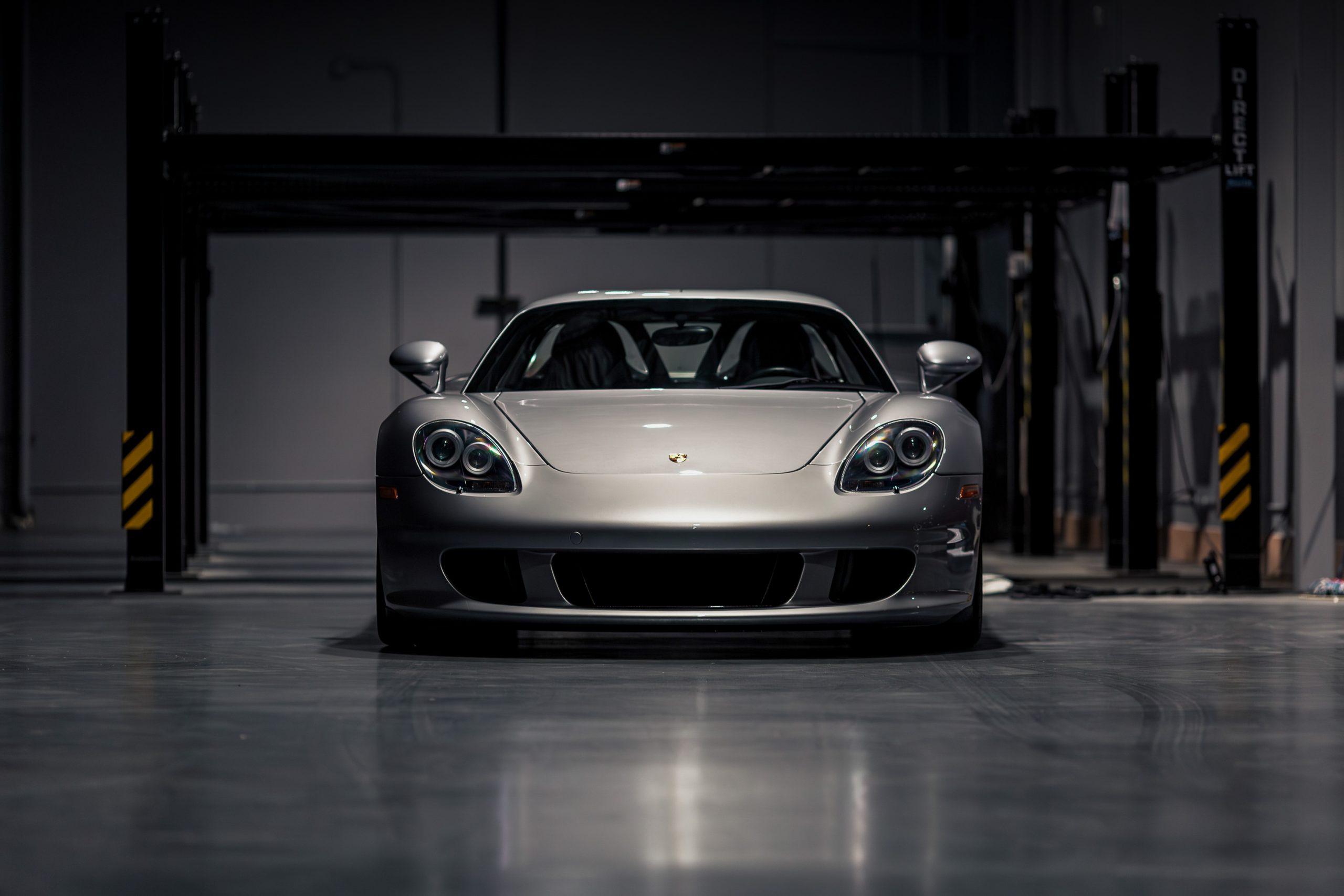The 964 Carrera RS 3.8 was produced as a base for homologation for the venerable 3.8 RSR. It was unveiled in 1993 and produced in a very small series by Porsche’s Racing Department in Weissach-Flacht, and was an extreme evolution of the 964 Carrera RS that was released two years prior. It featured the wide-body look of the Type 964 Turbo, a massive rear spoiler, and three-piece “Speedline for Porsche” wheels with 235/40 and 285/35 tires, making it distinctively more aggressive in appearance than the fairly restrained styling of the Carrera RS of 1992 and capable of providing significantly more mechanical grip.
The original 1973 Carrera RS was available in Europe but not in the USA. Porsche decided to build the 1993 Carrera RS both to European spec and a limited number in compliance with US regulations. These US spec cars were assigned the name “RS America”. The intent was to create a basic lightweight, no frills 911 with minimal luxury options. The standard US Carrera 2 brakes, engine and gearbox were used. The RS weighed 2,945 pounds so it was almost 80 pounds lighter than a standard Carrera 2.
Of all the 1580 Carrera RS 2.7s, only 200 were made were ordered with this lightweight ‘Sports’ trim which made the car more responsive and purposeful. In many ways these few cars were the ultimate road-going Porsche of the 1970s. Known as the Sports, Lightweight or even the M471 option code, these cars had improved the power-to-weight ratio. Reports of 75kg were stripped from the standard model by fitting lightweight body panels and lightweight glass.
Revealed at the 1972 Paris Auto Show, the Carrera 2.7 RS was a special model used to homologate the 911 in Group 4 racing. Developed from the 911S, the 2.7 was more potent in almost every area. Compared to the standard Carrera, the 2.7 RS featured a larger engine, wider flares to accommodate the Fuchs alloy wheels, stiffened suspension, larger brakes and a ducktail rear spoiler. The Touring outsold the Lightweight, with a total of 1380 units built (the Lightweight had only 200 units).
The 964 Carrera RS (Standard) was introduced by Porsche for model year 1992 specifically for the European market as a lightweight, high performance version of the 964 Carrera 2. It featured a revised version of the standard 3.6 liter engine, titled M64/03 internally, with an increased power output of 260 bhp (194 kW; 264 PS). The RS does not look much different from the other 911 models of the period but its weight is reduced and power increased. True to its racing spirit, the Carrera RS featured bucket seats and thinner materials, but lacked power windows, air conditioning, air bags, and other creature comforts.
The 993 Carrera RS Clubsport, 213 of which were built to meet the FIA GT2 homologation requirements, is a race-ready, although street legal variant of the 993 Carrera RS, not to be confused with the track only 993 Carrera Cup RSR. Emphasizing its competition credentials, the 993 Carrera RS Clubsport came with a welded-in roll cage as standard, considerably increasing its rigidity, racing bucket seats, six-point safety harnesses, battery isolator switch, fire extinguisher, and a huge fixed rear wing, the latter also available on the 'base model' Carrera RS.
The 993 Carrera RS is a lightweight, stiffer version of the naturally-aspirated 993 Carrera meant for ultimate street performance. At its heart was the 3.8-liter normally aspirated Type M64/20 engine producing 300 bhp at 6,500 rpm along with 262 foot-pounds of torque at 5,400 rpm. Looking to save as much weight as possible, every non-essential item from the car was removed. The Carrera RS tipped the scales at a 1,280 kg. About 1,000 Carrera RS were built, making it one of the rarest and most collectable 993-generation 911's produced. In addition to the Base Trim it was also available as the race-ready, street legal, RS Clubsport (option M003).
Following the famous 1973 F-model 911 Carrera RS 2.7, Porsche built its successor based on the G-model and it was called the 911 Carrera RS 3.0. With its 172 kW engine, it was the most powerful series production street-legal Porsche made so far. With its new 3.0-liter engine, featuring mechanical fuel injection, it was capable of 230 hp. While 1,580 Carrera RS 2.7s were built for 1973, only 56 Carrera RS 3.0s were built for 1974.
For race teams and track day customers Porsche prepared a small number of the 964 Cup cars according to the FIA NG-T regulations. Officially called the Competition model, these custom-ordered cars were an intermediary step between the Carrera Cup option (M001) and the standard tourer (M002). This M0003 option was available directly from Porsche as a road-going model. These cars had almost all the Carrera Cup modifications including the new suspension. This lowered the car by 40mm in the rear and 50mm in the front. It also included fitting of the larger 930 Turbo disc brakes and adjustable anti-roll bars.


